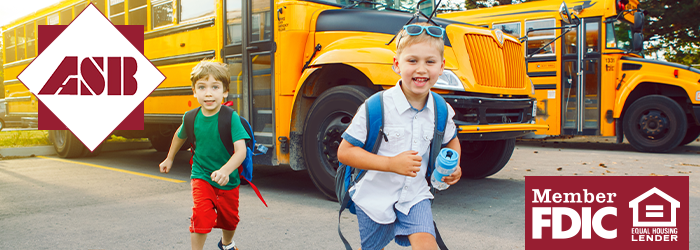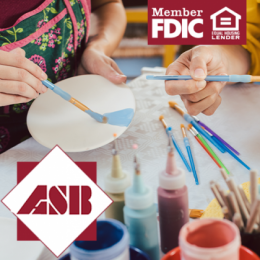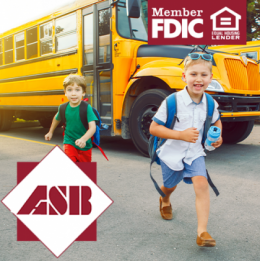
Back-to-school time is exciting for parents, but it can also be expensive! You have a whole new round of school supplies, clothes, tech upgrades, and extracurricular activities to worry about, all of which can add up fast.
Whether you’re shopping for new crayons, calculators, laptops, or sports gear, going into back-to-school shopping with a plan can help you stay on budget and do so stress-free. Here are seven budgeting tips for small kids, big kids, and teens, so you can prepare without overspending.
1. Take Stock Before You Shop
First thing you’ll want to do before you start shopping? Clean out their closets, desks, drawers, and backpacks. Chances are, you’ll find unused school supplies from years past. This small step can cut your shopping list (and your expenses) in half!
2. Shop Your Neighborhood First
Consider requesting specific items in your local “Buy Nothing” Facebook group. Many people are upgrading their kids’ lunch boxes or backpacks, and their “old” ones are in great condition. Plus, it helps them de-clutter (and you can do the same).
3. Check Out Thrift Stores for Supplies
Thrift stores aren’t just for clothes! They often carry binders, notebooks, filler paper, and other school supplies, especially at the end of the school year. Even if you’re not shopping for kids, these stores can be a goldmine for creative projects like journaling, writing, or art. It’s a great way to save money and give gently used items a second life.
4. Set Your Budget by Age Group
Every school district has its own supply list, but you can roughly plan your budget by your child’s age. Let’s break it down:
- Younger children: Start with the basics – crayons, pencils, glue sticks, notebooks, and a backpack. These items are usually inexpensive, so you can keep this budget small (shopping at your local Dollar Tree can help you save a few bucks on name brand supplies like Crayola, Paper Mate, etc.).
- Elementary schoolers: This list may grow to include bigger-ticket items like lunchboxes or new clothing, but the fun part is that they can help out in the shopping process! Get them involved by giving them a small budget to pick out some of their supplies on their own.
- Middle and high school students: Now is when you can expect your budget to increase as your child needs advanced supplies like graphing calculators, laptops, or sports gear. Encourage teens to compare prices and prioritize what’s truly needed.
Teaching kids how to balance their wants with their needs at an early age is an important money lesson that will benefit them for years to come.
Related: A Comprehensive Guide to Budgeting for Back-to-School Bliss
5. Shop Early and Shop Smart
No matter your child’s age, shopping early will help you avoid the last-minute scramble and take advantage of the best deals.
- Look for tax-free weekends and sales: Iowa’s Tax-Free Weekend is the first Friday and Saturday of August and can save you money on clothing and supplies.
- Join loyalty programs and download store apps: These can unlock extra discounts or coupons.
- Buy in bulk when possible: Items like pencils, paper, and tissues are cheaper when purchased in larger quantities. You’ll be stocked up for the whole year!
As your children age, encourage them to help out in the process by researching deals online and using price comparison tools. It can be a fun way to teach your child budgeting skills!
Related: Teaching Your Kids About Money With ASB Resources
6. Plan for “Hidden” Costs
Budgeting for the back-to-school season is about more than just school supplies. Take care to account for things like:
- Field trip fees
- Sports uniforms or activity dues
- School lunch accounts
- School picture packages
Setting aside a small amount for these costs can help prevent stress later in the school year when they crop up.
7. Teach Your Children to Budget with You
Learning how to set and stick to a budget is useful no matter what age a person is, but there are different ways to go about it depending on age.
- Young children: Use charts or sticker systems to show how money is spent and allow them to pick out one “fun” item within a set budget.
- Older kids: Give them a set amount of money and let them make their own shopping lists, teaching them how to find value and make trade-offs to help stay within the budget.
- Teens: If your teen doesn’t already have a checking account, now is the perfect time to open one. With an ASB account, parents can monitor spending alerts and limits, while teens gain valuable hands-on experience managing their own money.
Learn more about our checking accounts for teens and families here.
Related: 5 Financial Steps Teens Must Take Before Starting Their First Job
You've Got This!
Back-to-school season can be stressful, but it doesn’t have to be! With smart planning, early shopping, and involving your children in age-appropriate ways, you can stretch your budget and teach your kids valuable life skills.
Need a little extra help building your back-to-school budget? Our team at American State Bank is here to help with tips, savings accounts, and checking options that make managing your money easier.









